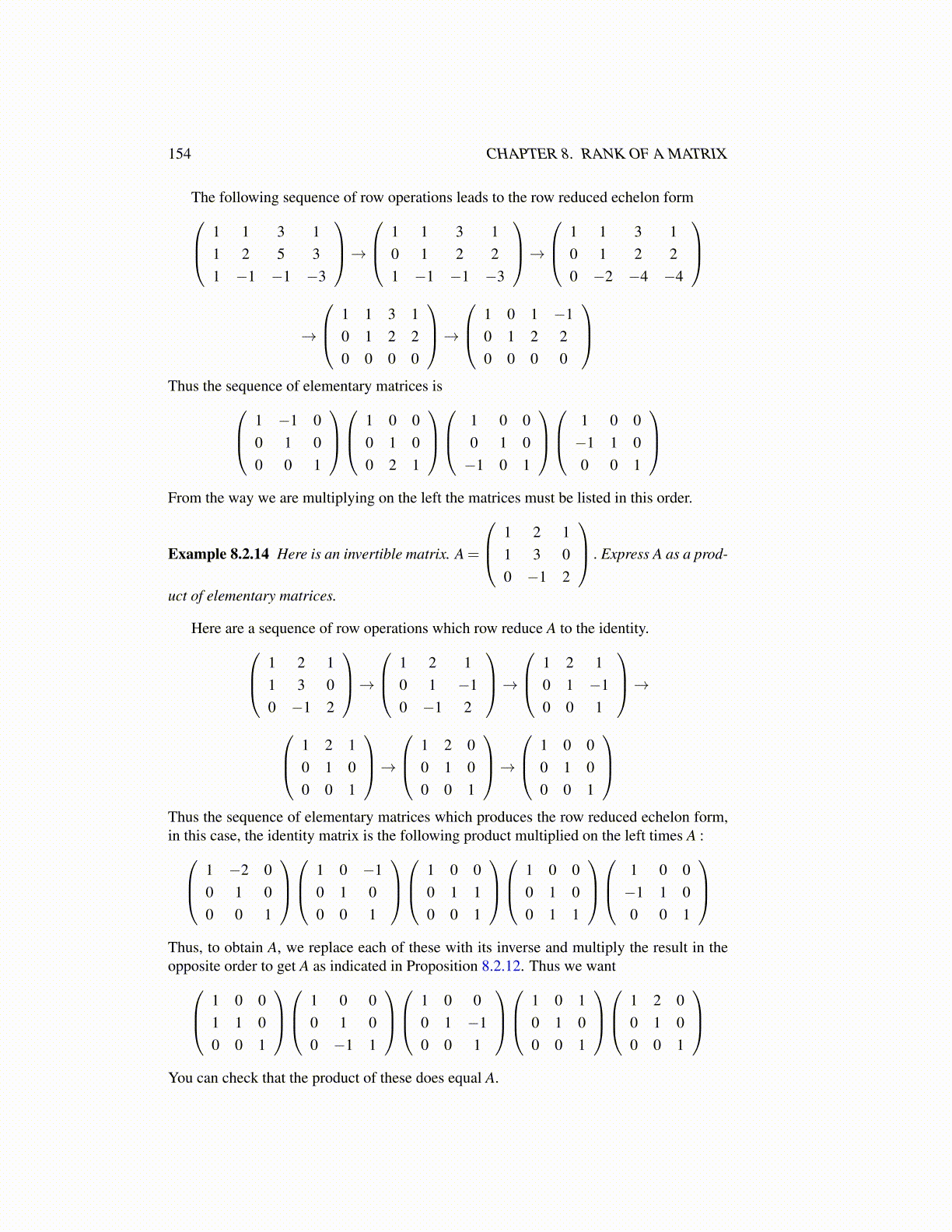
154 CHAPTER 8. RANK OF A MATRIX
The following sequence of row operations leads to the row reduced echelon form 1 1 3 11 2 5 31 −1 −1 −3
→ 1 1 3 1
0 1 2 21 −1 −1 −3
→ 1 1 3 1
0 1 2 20 −2 −4 −4
→
1 1 3 10 1 2 20 0 0 0
→ 1 0 1 −1
0 1 2 20 0 0 0
Thus the sequence of elementary matrices is 1 −1 0
0 1 00 0 1
1 0 0
0 1 00 2 1
1 0 0
0 1 0−1 0 1
1 0 0−1 1 00 0 1
From the way we are multiplying on the left the matrices must be listed in this order.
Example 8.2.14 Here is an invertible matrix. A =
1 2 11 3 00 −1 2
. Express A as a prod-
uct of elementary matrices.
Here are a sequence of row operations which row reduce A to the identity. 1 2 11 3 00 −1 2
→ 1 2 1
0 1 −10 −1 2
→ 1 2 1
0 1 −10 0 1
→ 1 2 1
0 1 00 0 1
→ 1 2 0
0 1 00 0 1
→ 1 0 0
0 1 00 0 1
Thus the sequence of elementary matrices which produces the row reduced echelon form,in this case, the identity matrix is the following product multiplied on the left times A : 1 −2 0
0 1 00 0 1
1 0 −1
0 1 00 0 1
1 0 0
0 1 10 0 1
1 0 0
0 1 00 1 1
1 0 0−1 1 00 0 1
Thus, to obtain A, we replace each of these with its inverse and multiply the result in theopposite order to get A as indicated in Proposition 8.2.12. Thus we want 1 0 0
1 1 00 0 1
1 0 0
0 1 00 −1 1
1 0 0
0 1 −10 0 1
1 0 1
0 1 00 0 1
1 2 0
0 1 00 0 1
You can check that the product of these does equal A.